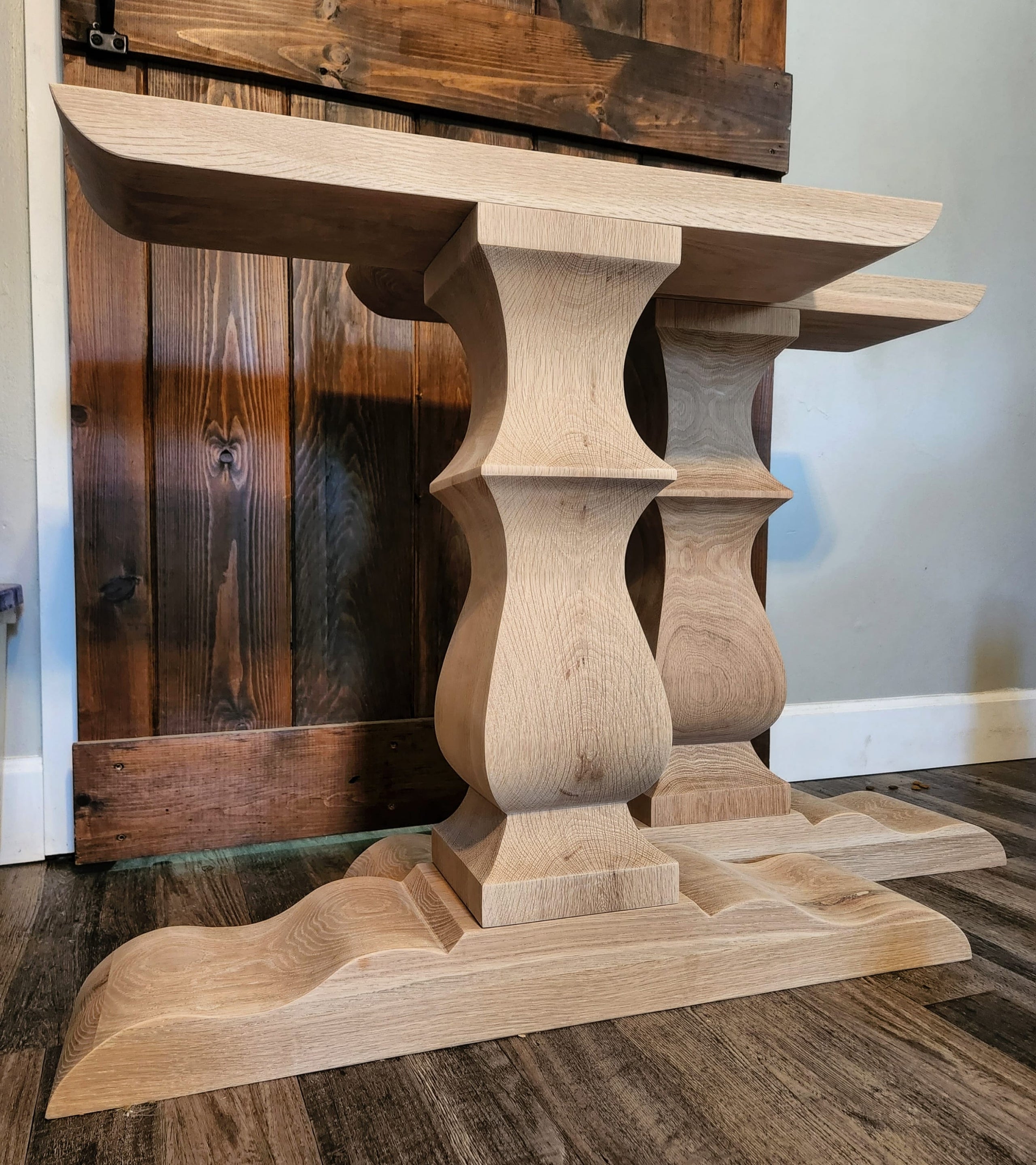Exploring Various Layouts for Dining Room Table Legs to Suit Your Visual
Exploring Various Layouts for Dining Room Table Legs to Suit Your Visual
Blog Article
A Detailed Take A Look At Table Leg Styles: Discovering the Ideal Suit
Picking the ideal dining table leg design is important for both aesthetic allure and sensible performance. Conventional 4 legs use ageless elegance and security, while the pedestal base provides boosted legroom and a contemporary appearance. For those with bigger tables, trestle legs ensure tough support, whereas hairpin legs present a mid-century contemporary ambiance with their minimal layout. The x-shaped legs blend contemporary style with enhanced stability. Each of these options brings unique advantages, making the selection greater than simply an issue of choice. Check out further to discover which style flawlessly matches your eating space and lifestyle.
Typical 4 Legs
Amongst the various types of eating table leg designs, the traditional four-leg design continues to be an ageless choice for many houses. 4 legs provide well balanced assistance, ensuring the table continues to be secure and capable of bearing significant weight (dining room table legs).
From a visual point of view, the traditional four-leg design can be quickly adjusted to various indoor designs. Whether crafted from wood, steel, or a mix of products, these legs can be intricately sculpted, sleek and minimalistic, or anything in between. Their versatility enables them to enhance both rustic and modern settings flawlessly.
Additionally, the straightforward framework of the four-leg style promotes simplicity of motion and placement within a room. Unlike more complicated bases, this style lessens obstructions, supplying enough legroom for restaurants. In summary, the traditional four-leg eating table leg style weds enduring sophistication with functional functionality, making it a sharp option for those looking for both type and function in their eating furnishings.
Stand Base
Typically celebrated for its sophisticated and space-efficient design, the pedestal base is a notable choice to the conventional four-leg setup in dining table leg designs. This distinct base usually includes a solitary central column supporting the tabletop, which can differ in form, from ornately carved timber to smooth, modern-day metal. Among the main advantages of the pedestal base is its ability to make best use of legroom and seating versatility. Without corner legs, restaurants are afforded greater freedom of activity, making it an optimal choice for round and oval tables that promote even more intimate and comprehensive celebrations.
Moreover, the pedestal base's central assistance can handle substantial weight, permitting the usage of heavier table tops, such as marble or thick hardwood. This stamina coupled with its visual flexibility makes the stand base a preferred selection in both standard and modern indoor settings. It can effortlessly integrate with various layout styles, from timeless elegance to minimal modernity. The central column itself supplies a canvas for elaborate layouts and imaginative expressions, adding an aspect of visual interest under the table. In summary, the pedestal base combines performance snappy, making it a refined and useful choice for diverse dining environments.
Trestle Legs
Trestle legs supply a durable and classic foundation for eating tables, defined by their straight cross-bracing and sturdy support light beams. Stemming from middle ages times, this style has evolved yet kept its vital framework, making it a perennial fave in both standard and contemporary settings. The main trestle beam of light, usually supported by 2 or more upright articles, offers extraordinary stability, permitting larger table lengths without the demand for extra legs.
A significant he has a good point benefit of trestle leg tables is the ample legroom they use. Unlike tables with 4 corner legs, the lack of blockages at the table's edges supplies unblocked space for chairs and restaurants, boosting comfort and availability. This makes trestle tables ideal for fitting larger events, whether in a dining-room or a banquet hall.
The aesthetic versatility of trestle legs is notable. Readily available in a range of products such as timber, metal, and composite, they can be ended up to complement a variety of indoor designs. From rustic farmhouse to streamlined modern styles, trestle legs can be personalized to match specific preferences. Their long-lasting appeal and functional benefits make trestle legs a compelling option for those seeking both style and functionality in their table.
Barrette Legs

The charm of barrette legs depends on their simplicity and convenience - dining room table look at this web-site legs. Available in a variety of products, including steel and brass, they can be completed in countless colors to match various indoor styles. Whether matched with a rustic wood table top or a contemporary glass surface, hairpin my sources legs easily mix functionality with a touch of vintage appeal
Durability is another significant attribute of barrette legs. Despite their delicate appearance, these legs are engineered to birth significant weight, ensuring the dining table remains steady and safe. In addition, they are reasonably very easy to install, making them a popular choice for DIY fanatics and expert furnishings manufacturers alike.
X-Shaped Legs

Constructed from materials such as steel, timber, or a mix of both, X-shaped legs can be customized to match various design preferences. Steel legs commonly offer a streamlined and industrial feel, ideal for loft-style apartment or condos and modern-day eating rooms.
Moreover, the engineering behind X-shaped legs guarantees even weight distribution, lessening the danger of tottering and boosting durability. This makes them particularly well-suited for larger table that require additional support. Essentially, X-shaped legs blend useful engineering with modern aesthetic appeals, making them an ageless option for varied dining settings.
Verdict
A comprehensive understanding of eating table leg designs discloses the distinctive attributes and advantages of each style. Conventional four legs offer security and classic allure, while stand bases offer legroom and a streamlined appearance. Trestle legs ensure durable support for bigger tables, and hairpin legs present a mid-century modern visual. X-shaped legs integrate contemporary design with boosted security. Choosing the suitable leg style makes certain both useful and aesthetic complete satisfaction in any eating area.
Report this page